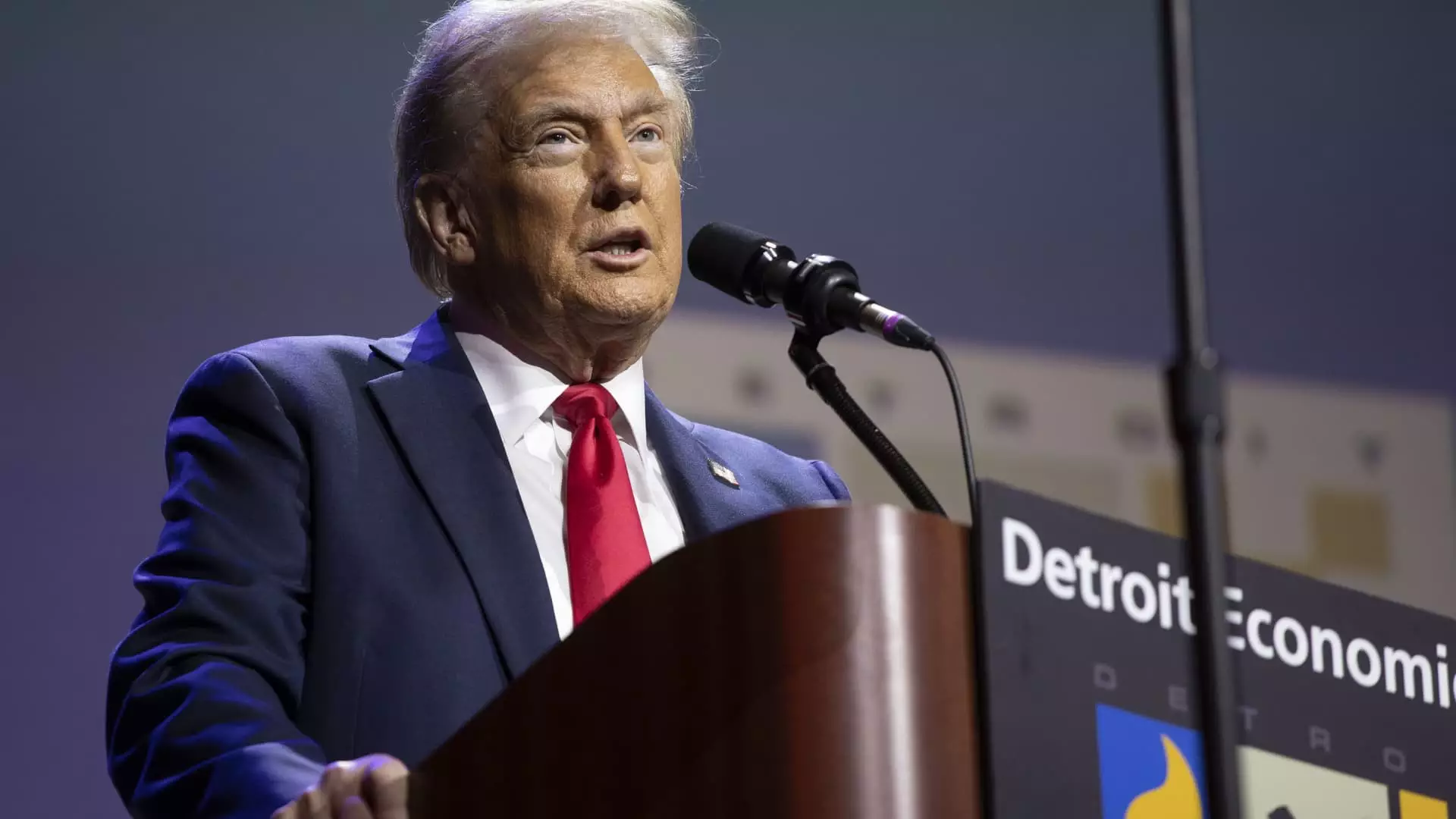As the political landscape evolves leading up to the 2024 presidential elections, Donald Trump’s economic rhetoric is once again surfacing with fervor. Reports indicate that Robert Lighthizer, Trump’s former US Trade Representative and a key architect of his initial trade policies, is actively engaging with Wall Street investors. In these discussions, Lighthizer has suggested that should Trump reclaim the presidency, significant tariff measures could be swiftly enacted, potentially implementing a staggering 60% tariff on imports from China and a broad 10% across the board.
This prospect, while speculative at this juncture, raises substantial concerns among economists and policymakers about its implications for the economy. The trade strategies mooted by Trump and echoed by Lighthizer, who now advises the Trump campaign on economic matters, signify a continuation of the protectionist stance that characterized Trump’s first term. The analysts at Piper Sandler have warned clients about the seriousness of these tariff proposals, which could drastically reshape trade dynamics and economic policies in a second Trump administration.
The Influence of Lighthizer in Trump’s Campaign
Robert Lighthizer’s pivotal role in Trump’s past administration cannot be understated. His expertise in trade discussions positions him as a strong candidate for a senior role in a potential future Cabinet, especially if tariffs are to remain a focal point of Trump’s economic strategy. This connection suggests that Trump’s commitment to high tariffs is not merely rhetoric; it is a well-planned approach that sees economic leverage as essential to modern governance.
Despite this backdrop, uncertainty lingers regarding the exact policies that could be deployed. The Trump campaign’s press secretary, Karoline Leavitt, tempered expectations by emphasizing that official policy announcements must come directly from Trump himself. Still, Lighthizer’s dialogues with investor groups highlight the serious contemplation of aggressive trade measures that align with Trump’s broader economic vision, noted for its emphasis on reshoring jobs and curtailing foreign competition.
The potential for high tariffs once again has ignited debates about their impact on the American economy. Critics, including Democratic presidential nominee Kamala Harris, point to substantial studies warning that Trump’s tariffs could translate into significant cost burdens for American families, estimating an average tax hike of nearly $4,000. Such analyses resonate with apprehensions surrounding inflation, employment rates, and the gross domestic product (GDP).
Economists predict that the ripple effects of sweeping tariff policies could stifle growth and lead to increased consumer prices—an outcome Trump vehemently denies. Yet, the juxtaposition of Trump’s protectionist strategies against the reactions of conventional economists presents a compelling narrative that merits scrutiny. The impact of tariffs on industries such as automotive and technology, as well as their broader implications for international relations, raises questions that extend well beyond electoral politics.
Historically, Trump has viewed tariffs as a cornerstone of his economic platform, framing them as solutions for revitalizing American industries and insourcing jobs. His assertions, proclaiming that tariffs are “the greatest thing ever invented,” paint a picture of economic rejuvenation through protectionism. Trump argues that this strategy will not only decrease foreign competition but also provide the necessary revenue to fund his expansive tax cuts and maintain government programs.
At the same time, Trump entangles tariff fears with a broader discourse that seeks to rally both domestic support and political leverage. His claims that tariffs will selectively shield U.S. industries while generating funds for tax incentives suggest a calculated approach to both governing and campaigning. This duality—promoting aggressive tariffs while maintaining a favorable public perception—demonstrates the complexities underlying Trump’s economic narrative.
Critique and Economic Realities
Despite Trump’s assertive promises regarding tariffs, economic analysts remain skeptical about their viability as an alternative to conventional tax structures. Suggestions that tariff revenues could replace income taxes have been met with staunch criticism, with experts pointing out the impossibility of such a transition without severe economic disturbances. Notably, any move to swell government income through tariffs must be balanced against the potential fallout on consumer prices, employment, and wider market stability.
In light of the pending political showdown between Trump and his opponents, it becomes clear that the conversation around tariffs is not just a discussion about trade, but rather a focal point of a larger ideological battle—the struggle between free trade and protectionism. As the 2024 election approaches, how Trump’s economic strategies resonate with the electorate will undoubtedly play a crucial role in shaping the next chapter of American trade policy. The stakes are high, and the consequences of Trump’s tariff revival loom large over the economic landscape.


Leave a Reply